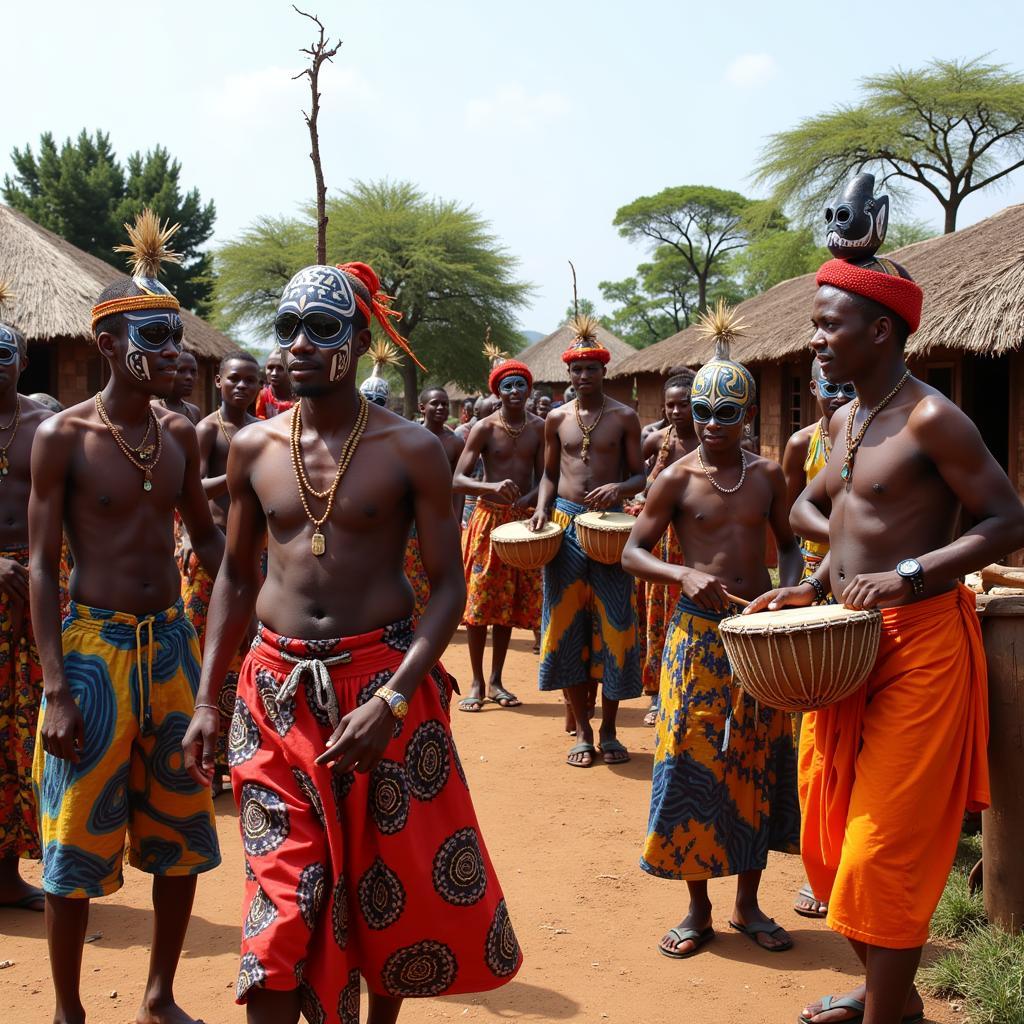A Comprehensive Guide to African Antelope Breeds
African Antelope Breeds showcase an incredible diversity, adapting to a wide range of habitats and lifestyles across the continent. From the diminutive dik-dik to the majestic eland, these graceful creatures play a vital role in the African ecosystem. This guide will explore the fascinating world of African antelope, delving into their unique characteristics, behaviors, and conservation status. After reading this, you will have a deep understanding of these remarkable animals.
Exploring the Variety of African Antelope Breeds
Africa is home to a stunning array of antelope species, each with its own distinctive features and adaptations. Their diverse appearances range from the spiral horns of the greater kudu to the straight horns of the oryx. Some antelope are solitary creatures, while others gather in large herds for protection. Understanding these differences is crucial to appreciating the richness and complexity of African wildlife. For instance, the duiker, a small and secretive antelope, prefers dense forests, while the gerenuk, with its long neck, browses on leaves high in trees. Did you know some antelope can even survive in arid deserts by obtaining water from the plants they eat? This adaptability is a testament to their resilience and evolutionary success.
The Significance of Horns in African Antelope Breeds
Horns play a vital role in the lives of many African antelope. They are not merely decorative; they are essential tools for defense against predators like the African hound or attracting mates. The shape and size of the horns vary greatly between species, reflecting their specific ecological niche and social structure. For example, the sable antelope, known for its impressive curved horns, uses them in dominance displays and fights with rivals. Female antelope of some species also possess horns, using them to defend their young. The unique horn structures of each antelope breed contribute to their distinctive appearance and ecological role within the African landscape. This fascinating aspect of antelope biology provides insight into their evolutionary adaptations and survival strategies.
Conservation Challenges Facing African Antelope
Sadly, many African antelope breeds are facing significant conservation challenges. Habitat loss due to human encroachment, poaching, and climate change are major threats to their survival. Organizations and local communities are working tirelessly to protect these magnificent animals and their habitats. Efforts such as anti-poaching patrols, habitat restoration, and community-based conservation programs are crucial for ensuring the long-term survival of these iconic species. Supporting these initiatives is essential for preserving the biodiversity of the African continent. Consider supporting organizations that work to protect these animals. Just as the African hunting dog breeds face challenges, so do these antelope. Understanding these threats and taking action can help ensure a future where these beautiful creatures continue to roam the African savanna.
What are the common types of antelope found in Africa?
Some common types of antelope found in Africa include the impala, kudu, eland, springbok, and gazelle.
How do antelope adapt to different environments?
Antelope have adapted to various environments, from deserts to savannas and forests. Their adaptations include specialized diets, water conservation mechanisms, and different social structures.
What are the main predators of antelope?
Antelope face predation from lions, leopards, cheetahs, hyenas, wild dogs like the African hunting dog breeds, and crocodiles.
What is the role of antelope in the African ecosystem?
Antelope are a crucial part of the African ecosystem, serving as prey for predators and contributing to seed dispersal and vegetation control. Perhaps you’re also curious about an African cow like animal, and its role in the ecosystem.
Conclusion: Preserving the Legacy of African Antelope Breeds
African antelope breeds are a testament to the beauty and diversity of the African continent. Understanding their unique adaptations, behaviors, and the challenges they face is essential for their conservation. By supporting conservation efforts and promoting responsible tourism, we can ensure that these magnificent animals continue to thrive for generations to come. Consider learning more about the African hound, another fascinating creature of the African continent.
FAQ
-
What is the largest antelope species in Africa? The eland is the largest antelope species in Africa.
-
What is the smallest antelope species in Africa? The royal antelope is the smallest antelope species in Africa.
-
How many different antelope species are there in Africa? There are over 90 different antelope species found in Africa.
-
Are all antelope herbivores? Yes, all antelope are herbivores, feeding on grasses, leaves, and other plant matter.
-
Do all antelope have horns? No, not all antelope have horns. Some species, like the waterbuck, only have horns on the males.
-
What is the lifespan of an antelope? The lifespan of an antelope varies depending on the species but typically ranges from 10 to 25 years.
-
How do antelope communicate with each other? Antelope communicate through a variety of vocalizations, postures, and scent marking.
For any assistance, please contact us at Phone Number: +255768904061, Email: [email protected] Or visit us at: Mbarali DC Mawindi, Kangaga, Tanzania. We have a 24/7 customer service team.


